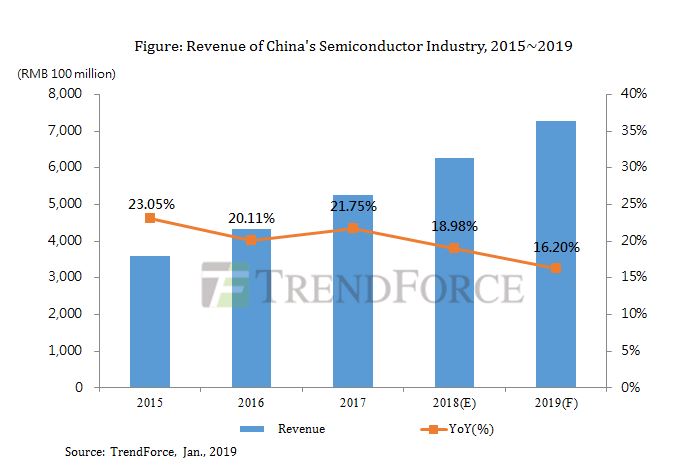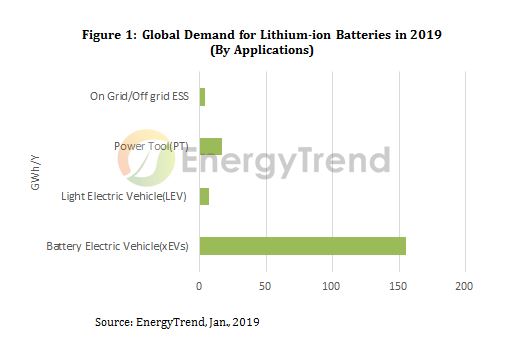TV Brands Offer Attractive Retail Prices for Black Friday Sales
According to the latest report by WitsView, a division of TrendForce, the global shipments of branded LCD TV sets for 2018 are forecast to total 218 million units, an increase of 3.4% compared with last year. The market has been driven by stock-up demands for the World Cup and lower prices of TV sets. Since BOE’s Gen 10.5 fab entered production, the costs of large-size panels have witnessed a significant drop, lowering the prices of TV sets as well. Particularly, more attractive retail prices for large-size models may fuel future growth in the TV market.
“Looking ahead to 2019, international TV brands will be looking for more growth from advanced TV technologies, including 8K, QLED, and OLED”, says Jeff Yang, research manager of WitsView. On the other hand, Chinese TV brands continue to explore overseas markets and to increase the share of large-size TVs in their product mixes. In addition, TV brands plan to cut the prices during the Black Friday sales, and may retain the promotion prices for the whole year. For the next year, the attractive retail prices may boost the TV demand, despite the lack of global sports events. Therefore, global TV shipments are expected to further expand to 221 million units in 2019, a growth of 1.3% YoY.
QLED segment may experience a price war; development of OLED products is still constrained by panel supply
Samsung, a leading player in the QLED TV market, would likely focus more on developing 8K TV in 2019, since OLED TV has shown higher penetration in recent years. The cost reduction of LCD panels this year has also lowered the prices of QLED TV, which will enable the vendors to offer more attractive prices in the coming Black Friday sales in North America. For instance, Samsung’s 55-inch QLED TV is priced at $999, and a 65-inch QLED TV at $1299 during the sales, indicating Samsung’s intention to retain its share in the QLED market through price cuts.
When Samsung provides aggressive prices for QLED models, LGE and Sony retain the premium prices of their OLED line-ups. However, the costs of OLED panel remain high due to the tight panel supply from LG Display and hurdles in yield improvements. With low-priced LCD TVs rushing into the market, it remains to be seen when OLED models are able to remain in the premium market positioning.
Chinese TV brands explore overseas markets faster and offer more large-size models in the domestic market
The TV sales turned out to be short of expectation in this year’s online shopping event in China on November 11th. It has been increasingly hard for vendors to take advantages from the potential of the retail e-commerce market. In addition, traditional TV brands are faced with less room for growth due to the rise of Xiaomi, so they have been working on exploring overseas markets. For example, TCL and Hisense are very active in expanding their shares in overseas markets, offering competitive prices in this year’s Black Friday sales in North America. Hisense’s 40-inch TV (non-Internet) is priced at $99, TCL’s 55-inch Internet TV is priced at $349 and 65-inch Internet TV at $398.
Chinese TV brands continue to increase the share of large-size TVs in their product mixes. As BOE’s Gen 10.5 fab began to ship products, with additional capacity from CSOT Gen 11 fab next year, the industry will have an abundant supply of large-size panels (65-inch, 75-inch, or above). The market is expected to see higher demand, fueled by a new wave of replacement purchase.
8K models have a strategic significance for TV makers, despite its difficult ramp up
In the near term, 8K TV still anticipates difficult ramp up. The limited growth is due to the high costs of panel, not fully developed supply chain and lack of content in 8K resolution. However, with a strategic significance for manufacturers, the arrival of 8K TV has changed the landscape of the premium TV segment, while expanding the customers’ choices of products beyond only QLED and OLED. Overall speaking, the future growth of TV market will lie in large-size TV and QLED/OLED models. With more fabs for large-size LCD panels and new capacity of OLED panels coming in, prices of large-size TV will drop faster, while QLED/OLED TV products will be upgraded faster.
在线留言询价

Revenue Growth in China's Semiconductor Industry Would Slow Down to 16.2% in 2019 due to Pessimistic
- 一周热料
- 紧缺物料秒杀
| 型号 | 品牌 | 询价 |
|---|---|---|
| CDZVT2R20B | ROHM Semiconductor | |
| RB751G-40T2R | ROHM Semiconductor | |
| BD71847AMWV-E2 | ROHM Semiconductor | |
| TL431ACLPR | Texas Instruments | |
| MC33074DR2G | onsemi |
| 型号 | 品牌 | 抢购 |
|---|---|---|
| IPZ40N04S5L4R8ATMA1 | Infineon Technologies | |
| TPS63050YFFR | Texas Instruments | |
| BP3621 | ROHM Semiconductor | |
| BU33JA2MNVX-CTL | ROHM Semiconductor | |
| STM32F429IGT6 | STMicroelectronics | |
| ESR03EZPJ151 | ROHM Semiconductor |
- 周排行榜
- 月排行榜
AMEYA360公众号二维码
识别二维码,即可关注



























